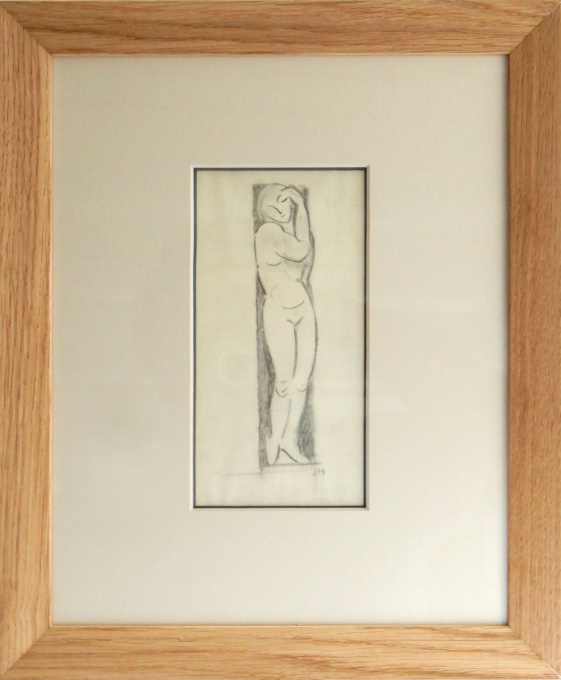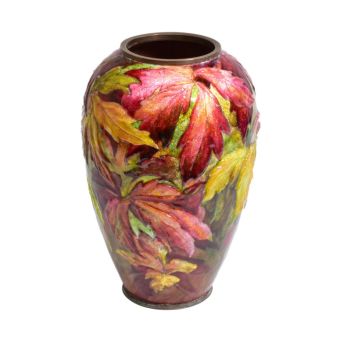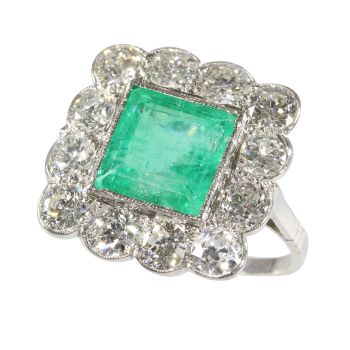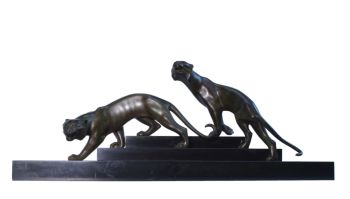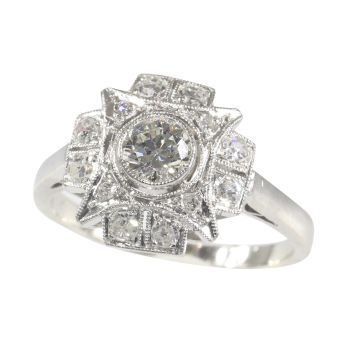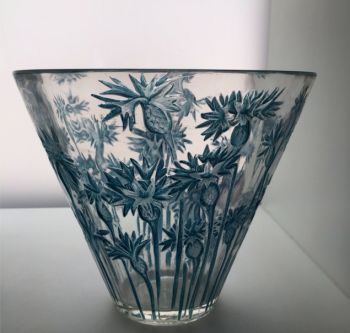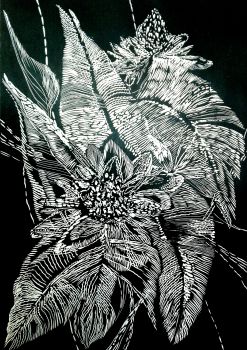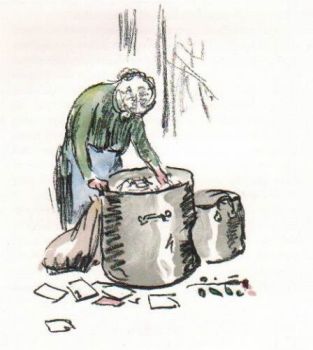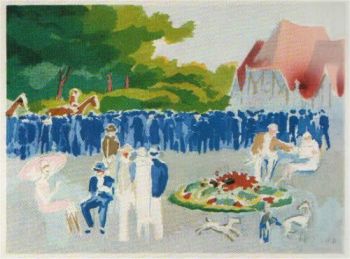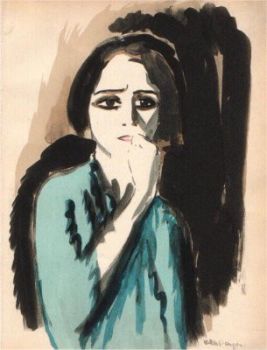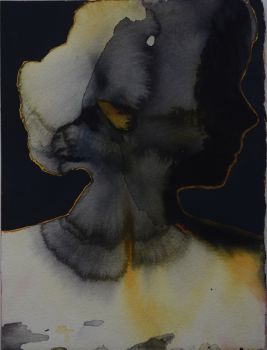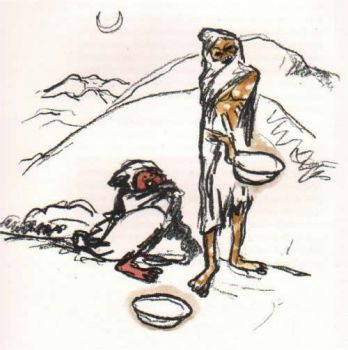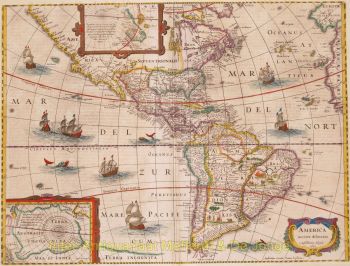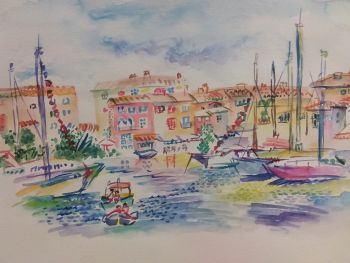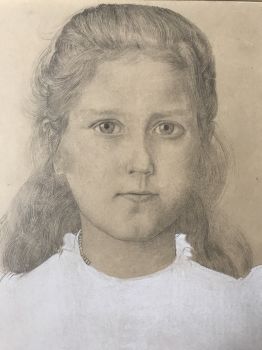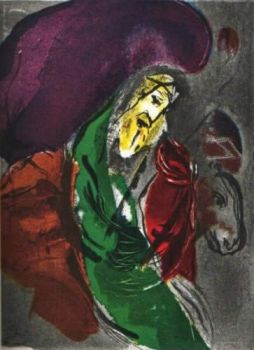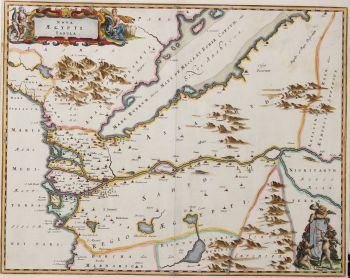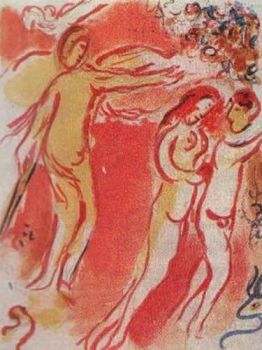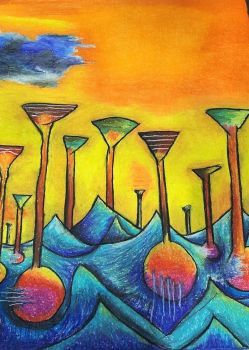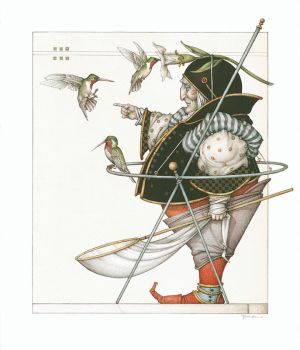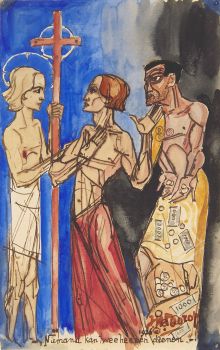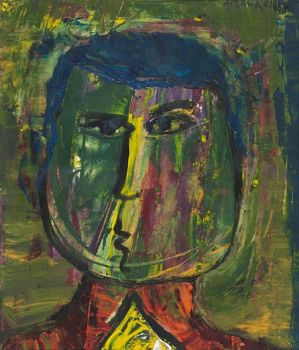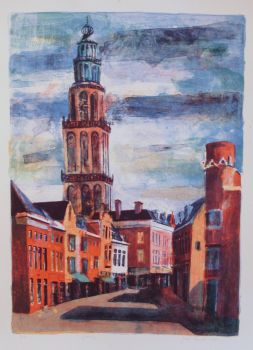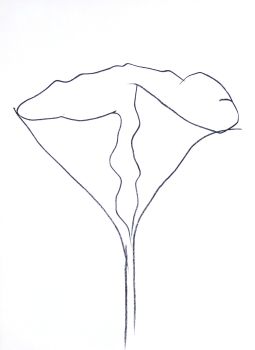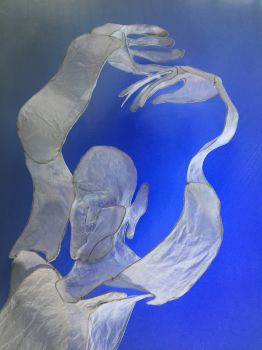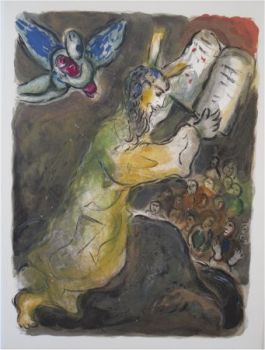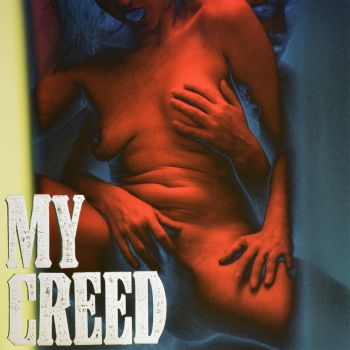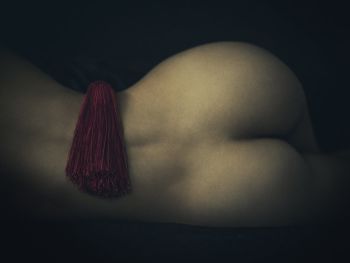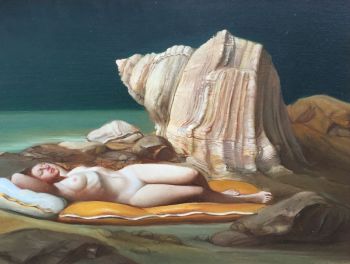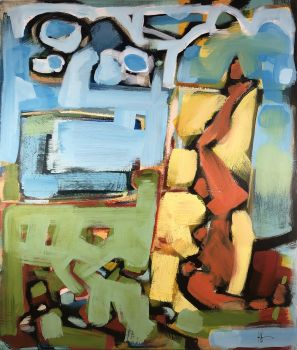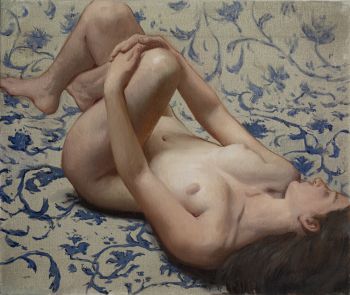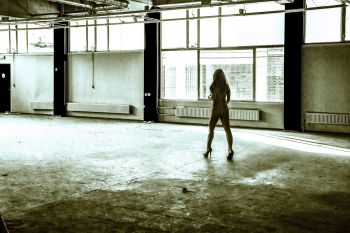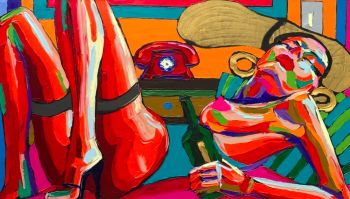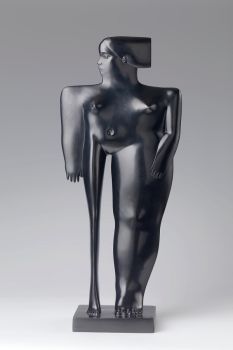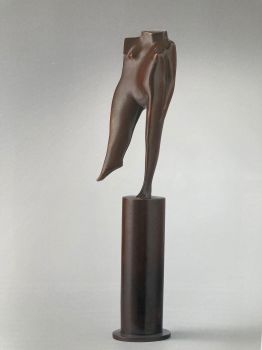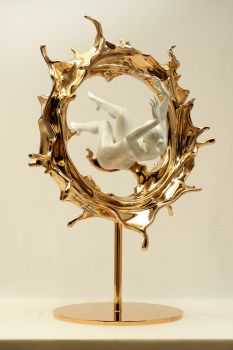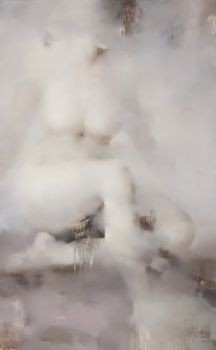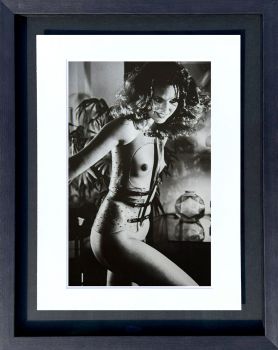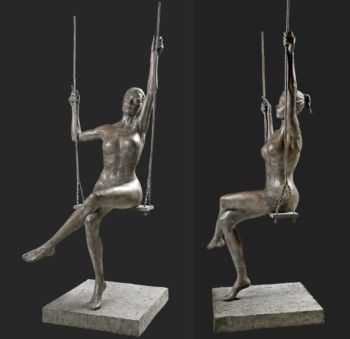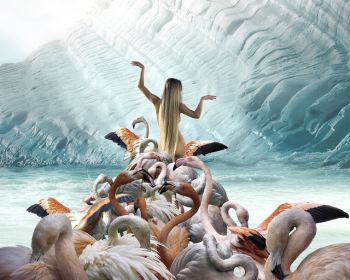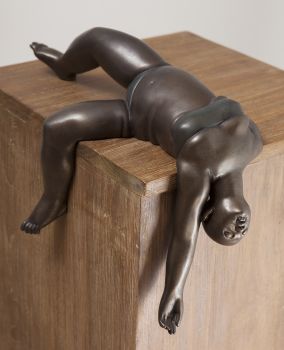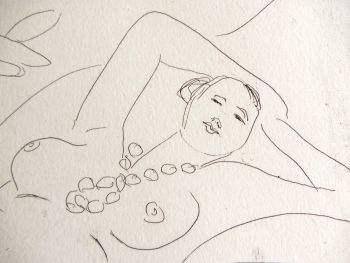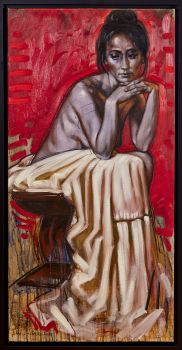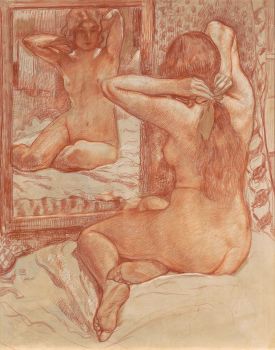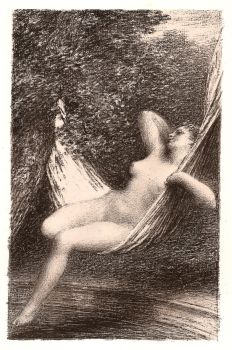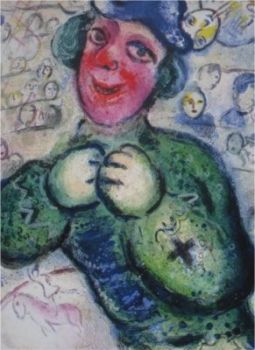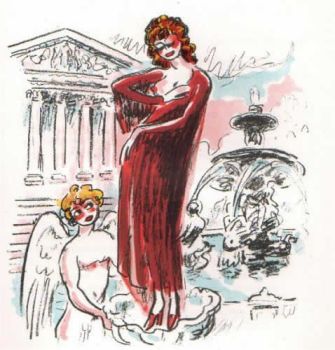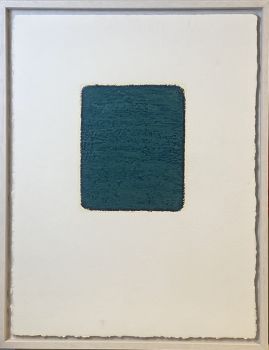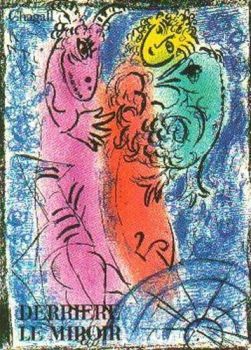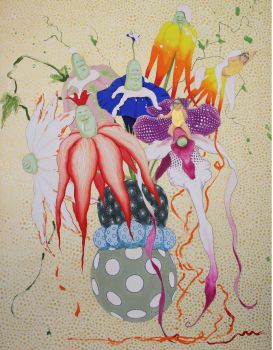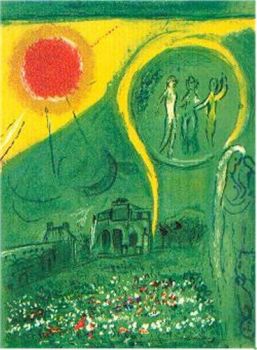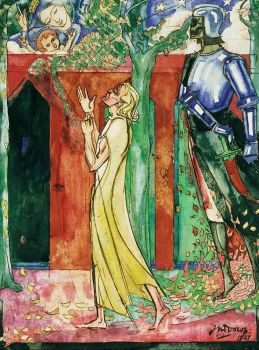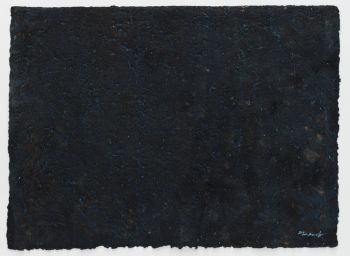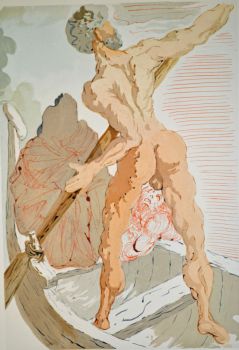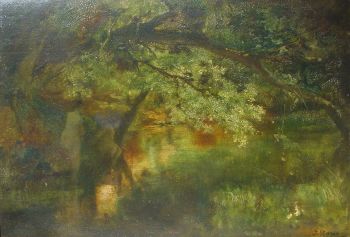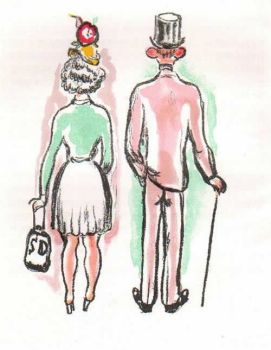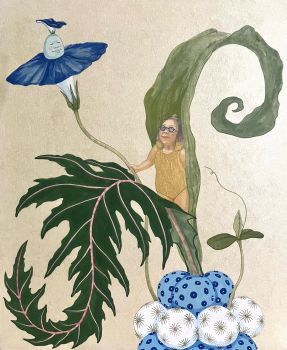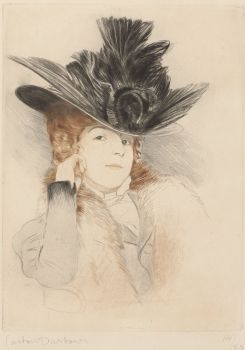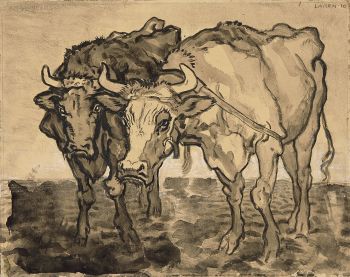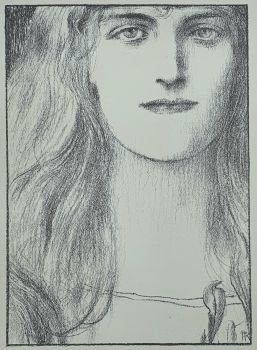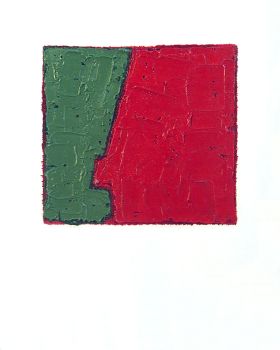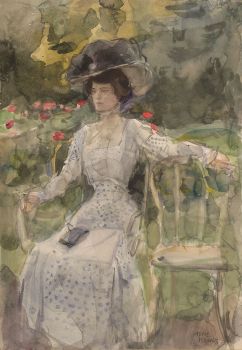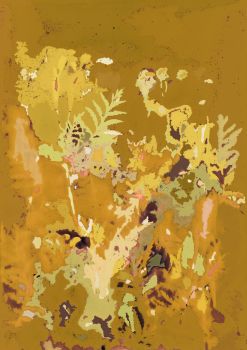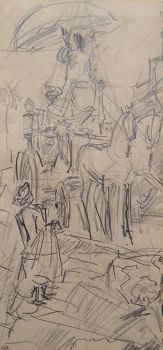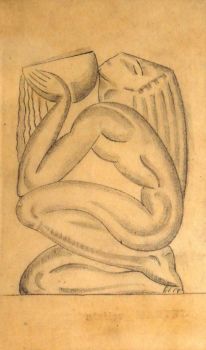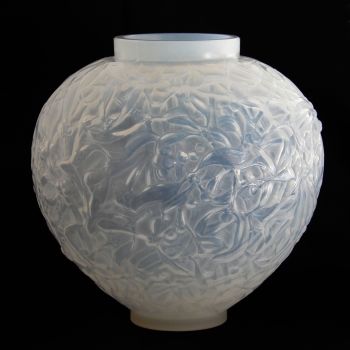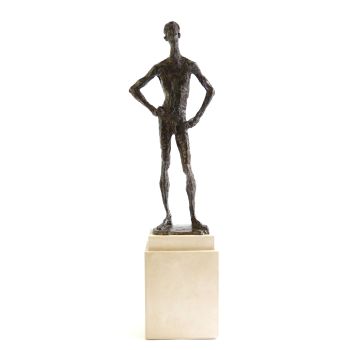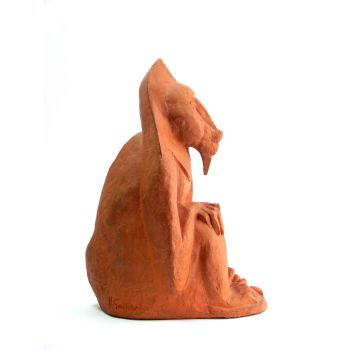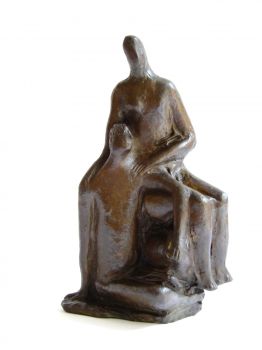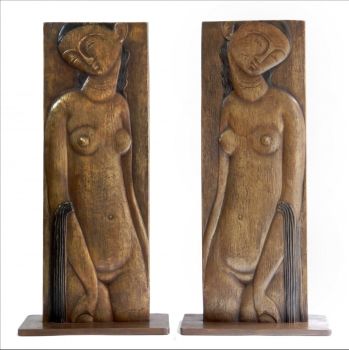Pencil drawing 'l'Odalisque' 1920 - 1930
Jan & Joëll Martel
PaperPencil
Currently unavailable via Gallerease
Dille Art
- About the artwork
Prachtige tekening van Jan of Joël Martel, van een elegante odalisk. Het is waarschijnlijk een studie geweest voor een sculptuur of reliëf. Mooi is de manier hoe hij de odalisk in de 'krappe' ruimte geplaatst heeft. Een odalisk was de benaming voor een concubine of slaaf uit de harem van de sultan. In de 19e eeuw werd ze al vaak afgebeeld in schilderijen of sculpturen (Oriëntalisme). Ook in de jaren 20 was ze een geliefd onderwerp, Matisse heeft regelmatig de Odalisk als thema in zijn schilderijen en grafiek gebruikt, vooral in jaren 20. Ze wordt vaak geportretteerd als erotisch en licht uitdagend. De tekening is gesigneerd met 'J.M.', het vaak gebruikte monogram op tekeningen van de beide broers. Dimensions: Drawing: Length: 17cm (6.69") Width: 8cm (3.15") List: Length: 34cm (13.39") Width: 28cm (11.02")
- About the artist
Jan and Joël Martel (Nantes,1896-Paris,1966) were not only sculptors but also twin brothers. They lived and worked in Paris after graduating from the École Nationale des Arts Décoratifs in Paris. They were very progressive and interested in the modern developments of their time such as speed, cars and other modes of transportation.
Their work consisted of ornamental sculptures, statues, monuments, posters and fountains. They also made interior designs for villas in the 1920s, they also collaborated with the architect Robert Mallet-Stevens and designed various animal figures for Villa Cavrois. They worked in the characteristic style of Art Deco and Cubism.
What characterizes their work is that they start from a naturalistic rendering, but use cubist elements and the stylization of Art Deco, later their work also becomes rounder, almost liquid, and their work is clearly modernist. They used many different materials. Women, dance and music were common themes, but they also made beautiful animal figures.
The two brothers shared their studio and often worked together on their artworks, they also shared the same signature. Their beautiful studio was completely designed by Robert Mallet-Stevens. It was also where the l'Union des Artistes Modernes' (UAM) was founded in 1929.
During the period between WWI and WWII, they participated in all the major Salons and the World Exhibitions of 1925 and 1937. They caused a sensation with their large Cubist trees, made of concrete, at the 'Exposition Internationale des Arts Décoratifs et Industrielles Modernes' in 1925. They also exhibited at the various Salons, such as the Salon des Indépendants, Salon d'Automne and Salon des Tuileries.
After sharing their entire lives together, the brothers died just months apart in 1966.
Currently, their work is highly sought after, their work is part of various public and private collections worldwide, such as the Musée d'Arts Décoratifs (MAD) Paris, MOMA , Museum of Modern Art in New York.
Literature:
Are you interested in buying this artwork?
Artwork details
Related artworks
René Lalique
An early vase 'Bluets' designed by Rene Lalique (1860-1945)1910 - 1920
Price on requestLennart Booij Fine Art and Rare Items
1 - 4 / 24Marc Chagall
Adam et Eve Chasses du Paradis Terrestre1952 - 1980
Price on requestArthouse Marc Chagall
1 - 4 / 24- 1 - 4 / 24
- 1 - 4 / 24
- 1 - 4 / 12

